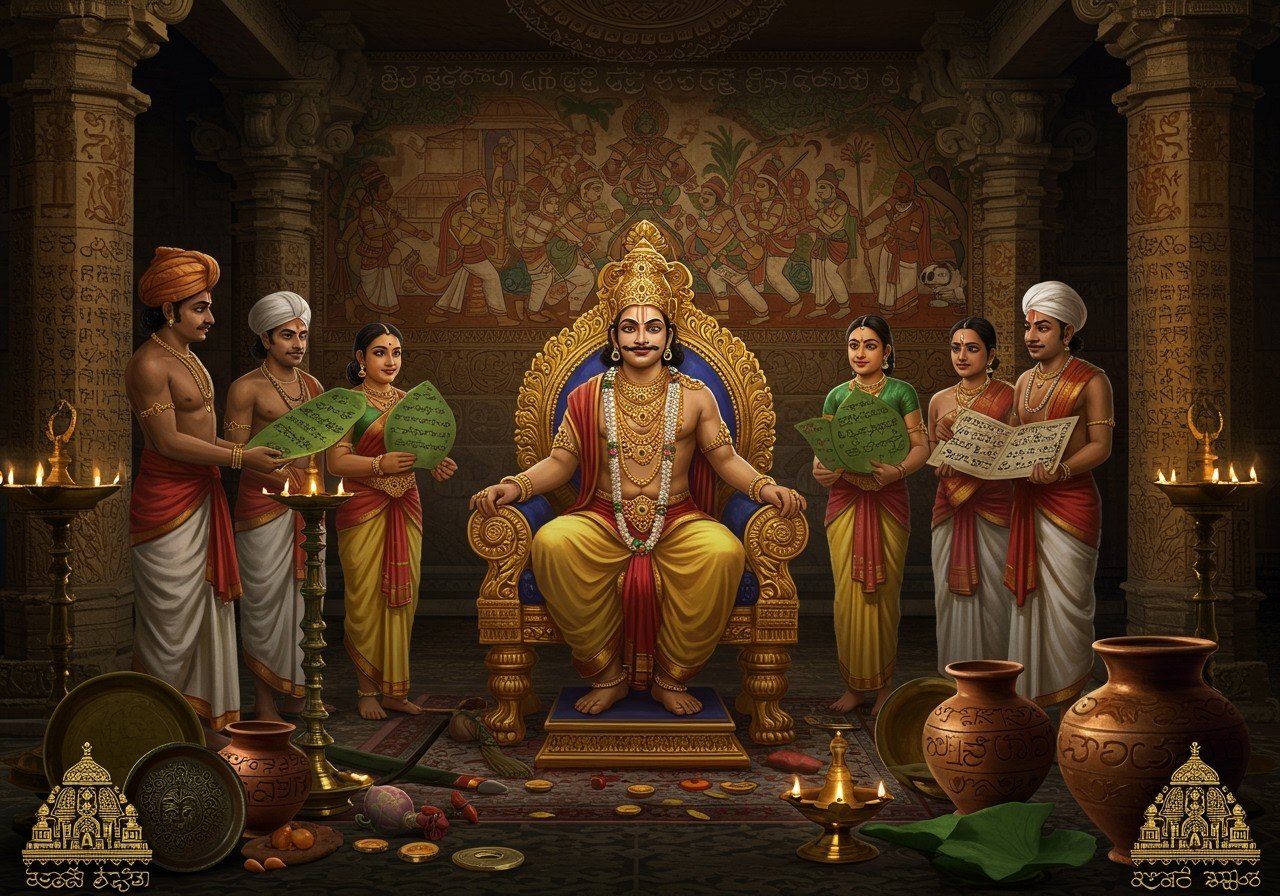
The Vishnukundina dynasty holds a significant place in the tapestry of Telugu history. Ruling between the 5th and 7th centuries CE, this ancient dynasty governed regions within present-day Andhra Pradesh, Telangana, Odisha, and other southern areas. Delving into their contributions provides valuable insights into the evolution of language, culture, and traditions that have shaped contemporary Telugu society.
Historical Overview of the Vishnukundina Dynasty
The Vishnukundina dynasty ascended to power in the early 5th century CE. Madhava Varma, a pivotal figure in their history, led the conquest of coastal Andhra from the Salankayanas, establishing their independence and expanding the kingdom significantly. The dynasty skillfully navigated political alliances and engaged in conflicts that defined their reign. Their organized governance structure facilitated notable achievements in art, architecture, and literature. Though the dynasty eventually declined, their contributions remain integral to understanding the region’s history.
Language and Literature
The Vishnukundinas exerted a profound influence on the Telugu language. Evidence from inscriptions and manuscripts reveals their role in the evolution of the Telugu script. Their support for scholars and poets fostered a rich literary output in Telugu, with works that continue to be studied today. The dynasty’s patronage preserved and enriched the language, shaping its grammar and vocabulary, ultimately laying the foundation for the identity of Telugu-speaking people.
Cultural and Artistic Achievements
The Vishnukundina era witnessed flourishing cultural advancements. Their architectural prowess is evident in the construction of temples and other marvels, such as the cave temples at Moghalrajapuram. They advanced the art of sculpture and iconography, particularly related to Hindu deities, while also promoting dance, music, and performing arts. Surviving artifacts showcase their artistic contributions and the integration of local traditions into broader artistic practices.
Religious and Ritual Practices
Hinduism thrived under the patronage of the Vishnukundinas. They constructed temples dedicated to various deities and popularized specific rituals and ceremonies. Their integration of regional traditions with mainstream Hindu practices significantly influenced religious life. Many festivals and rituals observed in modern Telugu culture have roots in the Vishnukundina period, demonstrating the enduring impact of their religious texts and teachings on the spiritual and social fabric of the region.
The Legacy of the Vishnukundinas
The legacy of the Vishnukundina dynasty resonates deeply within modern Telugu culture. Numerous traditions can be traced back to their era, highlighting the importance of preserving artifacts and historical sites to keep their contributions alive. Educational institutions and researchers play a vital role in honoring this legacy, ensuring that the dynasty’s impact on literature, arts, and religious practices continues to be recognized and appreciated. Understanding the Vishnukundinas enriches the cultural identity of Telugu-speaking people.
FAQs about the Vishnukundinas
Who were the Vishnukundinas? The Vishnukundinas were a dynasty that ruled parts of Andhra Pradesh, Telangana, and Odisha between the 5th and 7th centuries CE. They were significant patrons of Telugu language and culture.
What is their significance in Telugu history? The Vishnukundinas played a crucial role in shaping Telugu language, literature, art, and religious practices. Their reign is considered a formative period in Telugu history.
What were their major contributions? Their contributions include promoting Telugu literature, developing the script, constructing temples and architectural marvels, and fostering a unique blend of regional and mainstream Hindu traditions.
How did they influence the Telugu language? They encouraged the use of Telugu in literature and inscriptions, contributing to its standardization and growth as a prominent language in South India.
How Poojn.in Supports Your Telugu Cultural Practices
Poojn.in, India’s largest cultural goods and services store, offers a wide selection of products to connect you with your Telugu heritage. We understand the importance of authentic puja items in Telugu rituals and Vaishnava worship, a prominent practice during the Vishnukundina era and still prevalent today.
- Brass and Copper Items: We offer a diverse range of pure copper and brass puja items, essential for traditional Telugu ceremonies and daily worship. Explore our brass collection and discover our copper items.
- Items for Vaishnava Worship: Given the Vishnukundinas’ patronage of Vaishnavism, we offer specific items for Vishnu puja, including Shaligram stones, conch shells, and other essential items for observing traditional practices. Discover our Laddu Gopal collection and explore our Radha Krishna murtis.
Visit www.poojn.in/shop to explore our full range of products and connect with your Telugu heritage.
Conclusion
The Vishnukundina dynasty’s impact on Telugu history is undeniable. Their contributions to language, culture, and religious practices continue to shape Telugu identity. By studying their legacy, we gain a deeper understanding of our cultural roots and the importance of preserving them for future generations. Explore poojn.in to find items that connect you with this rich heritage.


